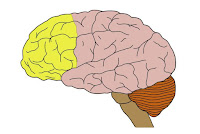High-Functioning Autism and Asperger’s: A Normal Variant of Personality?

All the traits that describe High-Functioning Autism (HFA) and Asperger’s (AS) can be found in varying degrees in the normal population. For example: People differ in their levels of skill in their ability to read nonverbal social cues. The capacity to withdraw into an inner world of one's own special interests is available in a greater or lesser measure to everyone. In fact, this ability has to be present in those who are creative artists, scientists, mathematicians, musicians, etc. A lot of people have outstandingly rote memories - and even retain vivid imagery into adult life. Collecting objects (e.g., stamps, old glass bottles, or railway engine numbers) are socially accepted hobbies. Many who are capable and independent as grown-ups have special interests that they pursue with marked enthusiasm. People differ in their levels of skill in social interaction. There is an equally wide distribution in motor skills. Pedantic speech and a tendency to take things l


